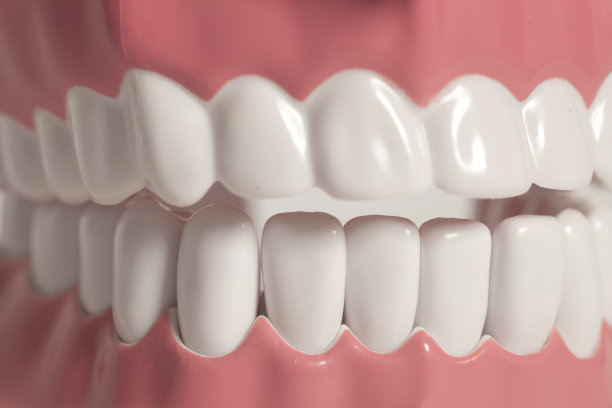Essential Guidelines to Ensure Effective and Safe Dental Filling Procedures for Optimal Oral Health
Summary: Dental fillings are a vital component of restorative dentistry aimed at reclaiming the health and function of damaged teeth. This article presents essential guidelines for ensuring effective and safe dental filling procedures that optimize oral health. By focusing on the selection of appropriate filling materials, the role of advanced dental technology, the importance of thorough patient assessment, and effective aftercare, we can enhance the success rates of dental fillings while ensuring patient safety. Each of these aspects will be elaborated upon to provide a comprehensive understanding of how to achieve optimal outcomes during dental filling procedures.
1. Choosing the Right Filling Material

When it comes to dental fillings, the choice of materials plays a crucial role in the effectiveness and longevity of the restoration. Common filling materials include amalgam, composite resin, gold, and porcelain, each having unique properties and suitability for different situations. Understanding the characteristics of these materials aids dental professionals in making informed decisions tailored to individual patient needs.
For example, composite resins are often favored for their aesthetic appeal as they can be color-matched to the natural tooth. However, they may not be as durable for larger fillings compared to amalgam. On the other hand, amalgam is known for its strength and longevity but lacks the cosmetic appeal. The decision must balance longevity, functionality, and esthetics based on the tooth’s location and the patient’s preferences.
Ultimately, a thorough discussion between the dentist and the patient regarding the advantages and disadvantages of each material is essential. This ensures that the selected filling not only meets functional requirements but also aligns with the patient’s expectations and oral health goals.
2. Utilizing Advanced Dental Technology
The integration of advanced dental technologies greatly enhances the effectiveness and safety of dental filling procedures. Tools such as digital x-rays, intraoral cameras, and CAD/CAM systems allow for accurate diagnosis and treatment planning, reducing the likelihood of complications during the procedure.
Digital x-rays, for instance, emit less radiation compared to traditional x-rays and provide high-resolution images that help in diagnosing problems more effectively. Intraoral cameras help patients visualize their dental issues firsthand, fostering better communication about treatment options. This transparency encourages patient trust and compliance, leading to improved treatment outcomes.
Moreover, CAD/CAM technology enables dentists to create precise, custom fillings in a single visit, streamlining the process and minimizing discomfort for patients. By utilizing these innovative tools, dental practitioners can ensure higher accuracy, safety, and efficiency in the dental filling process.
3. Importance of Comprehensive Patient Assessment
A thorough patient assessment is fundamental to ensuring safe and effective dental filling procedures. Before any restorative treatment, dental professionals must conduct a complete oral examination and take a detailed patient history. This process helps identify underlying dental issues, allergies, or medical conditions that could complicate the procedure.
Moreover, understanding a patient’s dental anxiety and preferences can lead to personalized approaches that enhance the patient experience. For example, offering sedation options or discussing the procedure in detail can help alleviate fears and result in a more relaxed patient during treatment.
A well-informed patient is more likely to follow post-treatment care instructions and attend follow-up appointments, which are vital for monitoring the success of the filling. Therefore, effective communication and assessment not only contribute to a smoother procedure but also enhance overall patient satisfaction and long-term oral health outcomes.
4. Effective Aftercare and Maintenance
Aftercare following a dental filling procedure is often an overlooked aspect yet plays a significant role in ensuring the longevity and success of the restoration. Dentists should provide patients with written and verbal instructions on how to care for their newly filled tooth, emphasizing the importance of maintaining good oral hygiene practices.
Patients should be encouraged to avoid hard or sticky foods for at least 24 hours after the filling has been placed in order to prevent damage or displacement. Additionally, regular dental check-ups are crucial for early detection of any potential issues with the filling or surrounding teeth.
Incorporating a routine of brushing twice a day with fluoride toothpaste, flossing daily, and possibly using an antibacterial mouthwash can substantially contribute to the health of the filled tooth and the overall oral cavity. Comprehensive aftercare not only ensures the durability of the filling but also safeguards against future decay, promoting optimal oral health.
Summary:
In conclusion, adhering to essential guidelines during dental filling procedures is crucial for achieving optimal oral health. The careful selection of filling materials, utilization of advanced dental technology, thorough patient assessment, and effective aftercare collectively contribute to successful outcomes and increased patient satisfaction. By implementing these practices, dental professionals can ensure that their patients receive high-quality care that promotes long-term oral health.
This article is compiled by Vickong Dental and the content is for reference only.


